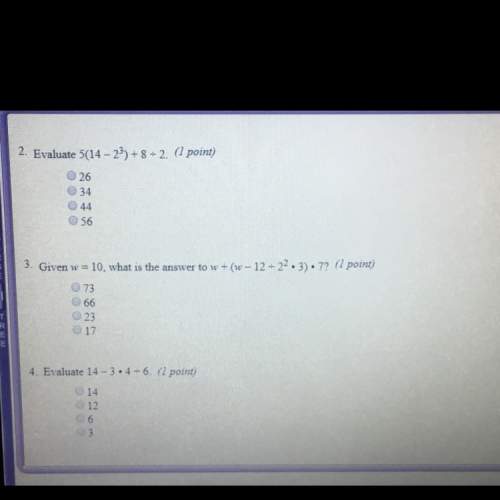
Mathematics, 17.02.2020 19:18 ibrahimuskalel
The quantitative data set under consideration has roughly a bell-shaped distribution. Apply the empirical rule to answer the following question. A quantitative data set of size 100 has mean 50 and standard deviation 4. Approximately how many observations lie between 38 and 62?

Answers: 1


Other questions on the subject: Mathematics


Mathematics, 21.06.2019 18:30, KTgodlencorgi
David is spreading mulch on a triangular area of his flower bed. the coordinates of the vertices of the area are (1, 3), (9, 3), and (4, 6). what is the area of the triangle if each square has an area of 3 square feet?
Answers: 1

Mathematics, 21.06.2019 19:00, Goldenstate32
Gh bisects fgi. find the measure of hgi •15° •21° •10° •8°
Answers: 2

Mathematics, 21.06.2019 19:30, mary9590
Cone w has a radius of 8 cm and a height of 5 cm. square pyramid x has the same base area and height as cone w. paul and manuel disagree on how the volumes of cone w and square pyramid x are related. examine their arguments. which statement explains whose argument is correct and why? paul manuel the volume of square pyramid x is equal to the volume of cone w. this can be proven by finding the base area and volume of cone w, along with the volume of square pyramid x. the base area of cone w is π(r2) = π(82) = 200.96 cm2. the volume of cone w is one third(area of base)(h) = one third third(200.96)(5) = 334.93 cm3. the volume of square pyramid x is one third(area of base)(h) = one third(200.96)(5) = 334.93 cm3. the volume of square pyramid x is three times the volume of cone w. this can be proven by finding the base area and volume of cone w, along with the volume of square pyramid x. the base area of cone w is π(r2) = π(82) = 200.96 cm2. the volume of cone w is one third(area of base)(h) = one third(200.96)(5) = 334.93 cm3. the volume of square pyramid x is (area of base)(h) = (200.96)(5) = 1,004.8 cm3. paul's argument is correct; manuel used the incorrect formula to find the volume of square pyramid x. paul's argument is correct; manuel used the incorrect base area to find the volume of square pyramid x. manuel's argument is correct; paul used the incorrect formula to find the volume of square pyramid x. manuel's argument is correct; paul used the incorrect base area to find the volume of square pyramid x.
Answers: 3
You know the right answer?
The quantitative data set under consideration has roughly a bell-shaped distribution. Apply the empi...
Questions in other subjects:


Business, 02.12.2019 07:31






Mathematics, 02.12.2019 07:31

Mathematics, 02.12.2019 07:31

Mathematics, 02.12.2019 07:31




